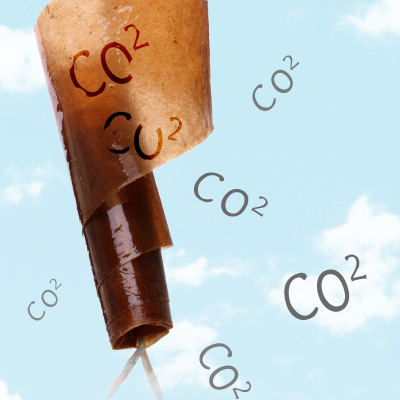
As atmospheric carbon dioxide levels continue to climb, a team of California scientists has created a new material that will help reduce the amount escaping from smokestacks and power plants.
The material, called polyethylenimine, or PEI, acts like a carbon dioxide fly-tape trap, attracting the greenhouse-gas molecules and sticking to them so they can’t escape.
Indeed, carbon dioxide is so attracted to the material that the team says it can pull the molecule right out of the air, something other carbon filter materials have not been able to do well.
“This is really an important quality,” said Alain Goeppert, a senior researcher at the Loker Hydrocarbon Research Institute at the University of Southern California. In the near future, it will enable small-scale removal of carbon dioxide from air in enclosed spaces, such as submarines and manned spacecraft, where carbon dioxide buildup can be hazardous, or in laboratories, where carbon dioxide can hinder engineering or the chemical reactions of certain products.
PEI may have long-term applications, too, for wide-scale removal of the gas from air.
 In addition, the team says PEI is cheaper and more easily produced than other materials already being used to extract carbon dioxide from smokestacks and industrial flues.
In addition, the team says PEI is cheaper and more easily produced than other materials already being used to extract carbon dioxide from smokestacks and industrial flues.
Goeppert and coauthor G.K. Surya Prakash, also a chemist at USC, say the new material is just part of a vision they have of carbon recycling and a carbon dioxide market.
One of the advantages of the new material is that it can be reused. Once the material is saturated with carbon dioxide, it is heated to a relatively low temperature of 85 degrees C (185 degrees F). At that temperature, the carbon dioxide is released and can be stored.
The carbon can then be used to create fuel.
Other materials also are able to release carbon for storage, but according to Prakash and Goeppert, those other materials need to be heated to very high temperatures — 700 or 800 degrees C (1,292 or 1,472 degrees F) — which requires a great deal of energy and, therefore, a large amount of carbon in the form of fossil fuels.
“It kind of defeats the purpose” of recycling the carbon to keep things carbon neutral, Goeppert said.
According to Prakash, widespread use of carbon dioxide-capturing materials, such as PEI, could provide an environment where “we wouldn’t need to drill or dig for fossil fuels anymore,” he said.
The research appeared in the Journal of the American Chemical Society.
Prakash and Goeppert’s vision for a carbon-neutral future is laid out in their book, Beyond Oil and Gas: The Methanol Economy. The book also was written by USC’s George Olah, a Nobel laureate.
This story was produced by California Watch for the Climate Desk Collaboration.


